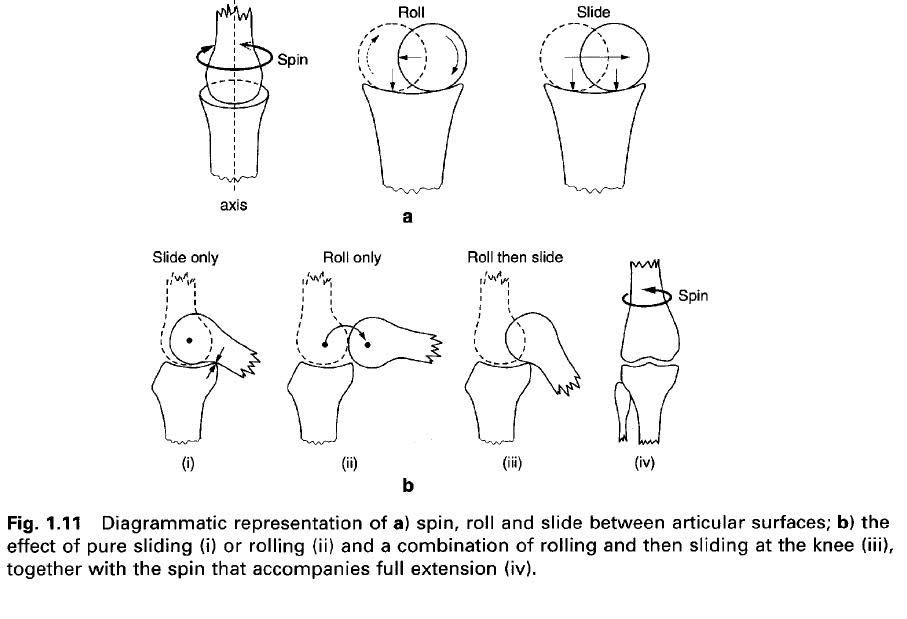Normally, it is unusual for spin, roll and
slide to occur separately as they complement one another in order that the
complex movements available at joints are possible. Combinations of spin, roll
and slide are the basic components underlying movement at all joints. This
concept can best be illustrated at the knee joint, a modified hinge joint,
because of the type of movement available: a true hinge joint would permit
slide only as one surface slides past the other about a fixed axis. For
example, if only sliding movements were possible at the knee movement would
soon be restricted because of contact of popliteal surface of the femur with
the posterior part of the tibial condyle(figure b - i). Similarly, if the
femoral condyles only rolled over the tibial plateaux the situation would soon
be reached where the femur would hypothetically roll of the tibia, because the
profile of the femoral articular condyle is much longer than that of the
tibia(b – ii). The actual movement at the knee joint is a combination of both
rolling and sliding between the two articular surfaces, under the control of
the ligaments of the joint, allowing a greater range of movement to be achieved(figure
b – iii). Spin also occurs at the knee joint as it approaches full extension,
as the femur spins on the tibia about its longitudinal axis so that the medial
femoral condyle moves backwards(figure b – iv). The resultant effect is to
place the knee into its close-packed position of maximum congruity between the
joint surfaces. As with the combination of rolling and sliding, the ligaments
of the joint are primarily responsible for bringing about spin at the knee.
14. 9. 2012.
Movements of the joints
Пријавите се на:
Објављивање коментара (Atom)










0 коментара:
Постави коментар